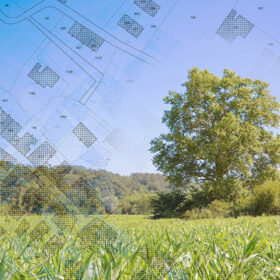Rhode Island is a small state favored with many natural attractions, not the least of which are its 400 miles of shoreline and more than 8,200 acres of public parks and recreation areas. Such lands frequently about private property, and their borders have increasingly become sparring rings for individuals declaring rival rights of access and ownership.
As lawmakers continue to look for means of balancing these competing interests, the U.S. Supreme Court issued its ruling in Cedar Point Nursery v. Hassid, refining the terms according to which a state may prohibit private landowners from denying access to their land by third parties. Rhode Island landowners with property adjoining public lands should take note: a state generally cannot compel a private landowner to provide public access without just compensation.
Cedar Point Nursery may be summarized as follows: when the government gives with one hand, it may also take with the other, and the Constitution compels it to pay for what it takes. The Takings Clause of the Fifth Amendment, applicable to the states through the Fourteenth Amendment, provides that private property shall not be taken for public use without just compensation. A physical taking—“the clearest sort of taking”—occurs when the government physically appropriates private property for public use.
The law before the Court in Cedar Point Nursery was a California regulation that granted union organizers access to agricultural employers’ property for three hours per day, 120 days per year to solicit support for unionization. The agricultural employers argued that the regulation effected an unconstitutional per se physical taking by appropriating without compensation a right to enter their property. In other words, the regulation granted an easement over the agricultural employers’ property. On the other hand, the Agricultural Labor Relations Board, the entity that promulgated the regulation at issue, argued that the regulation did not constitute a per se physical taking because it authorized only limited and intermittent access for a narrow purpose. The Board further argued that the regulation should be evaluated as regulatory rather than per se physical taking.
A regulatory taking occurs when the government imposes a regulation that restricts a private landowner’s ability to use his or her own property, as opposed to appropriating property for itself or a third party. While property may be regulated to a certain extent, if a regulation “goes too far” in restricting the use of property, it will be recognized as a regulatory taking. According to the Board, the appropriation of a three-hour per day, 120 days per year right to invade the agricultural employers’ property did not constitute a taking of a property interest but rather a mere restriction on its use.
In a 6 to 3 ruling, a majority of the Court held that the regulation constituted a clear, per se taking because it resulted in a physical appropriation of private property. Rather than restraining the agricultural employer’s use of their property, the regulation appropriated for the enjoyment of third parties the agricultural employers’ right to exclude. A common way of describing the rights of a property owner is that they constitute a bundle of sticks: each stick is a separate right related to the land, such as the right of possession or enjoyment. The Court emphasized that the “right to exclude” is “universally held” to be a fundamental element of property ownership—a principal stick in the bundle, to extend the metaphor. “The right to exclude,” the Court explained, “is not an empty formality that can be modified at the government’s pleasure.” When the government creates a right to invade private property—whether by statute, regulation, ordinance, or miscellaneous decree—a per se taking has occurred, regardless of the scope, duration, and frequency of the physical invasion. The terms of the permitted invasion bear the amount of compensation due, but not its fundamental effect.








